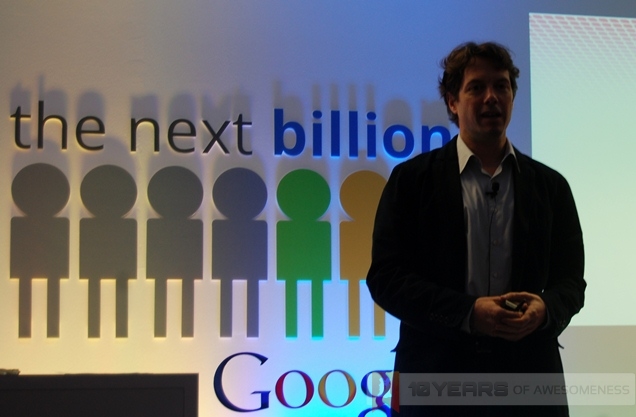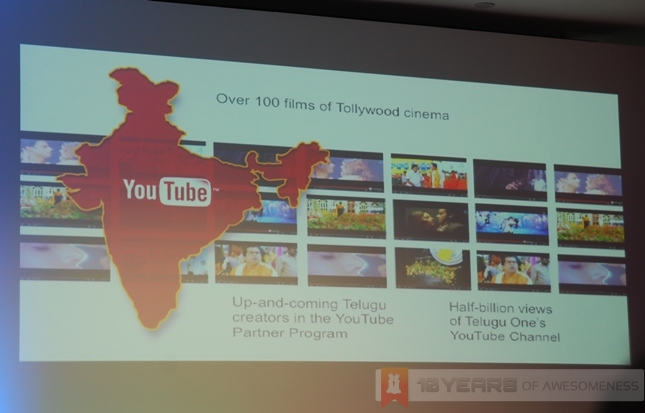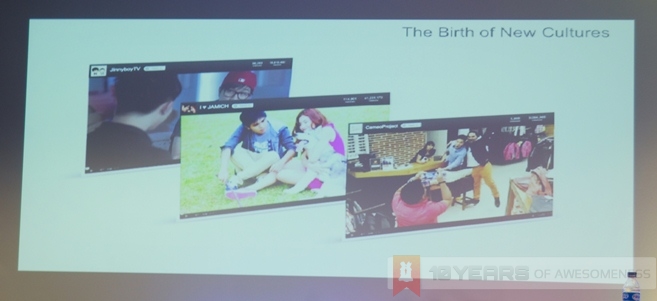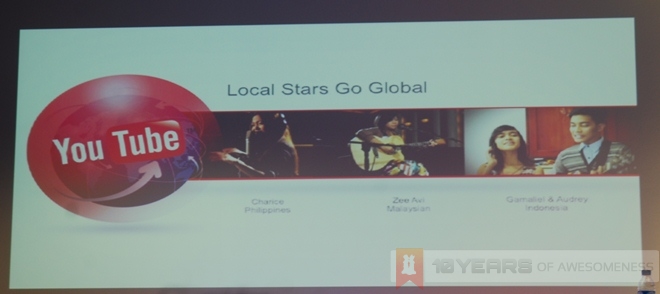During Google’s “Next Billion” event, we were also treated with a peek into how one of the company’s most successful products is has redefined global diversity, and continues to promote local cultures to the world simply by providing a continuously improving platform.
YouTube is certainly a misunderstood child. As a product that allows users the world over to upload any video that they want, it has received some unfair criticism for indirectly promoting Western cultures and leaving other cultures in the dark. Adam Smith, the head of YouTube Asia Pacific, banishes this claim, as well as giving us an insight into the company’s plans to bring the next billion stories on YouTube.
Connecting Cultures
One of the first things Smith dispels is the notion that YouTube is primarily a Western-driven video portal. YouTube, according to Smith, promotes diversity by design as well as promoting culture. It is a site viewed by millions the world over at any given moment, and notes that users from emerging markets are increasingly using the site to keep their own cultures alive. Users from around the world uploads videos that reflect heavily on their own unique culture, which simultaneously displays it for the world to see. It is a platform that exports the best local ideas to the world.
In addition, YouTube is increasingly used to connect cultures. Smith gives an example of Tollywood, the Telegu version of Bollywood. He notes that the Telegu One channel, which has over 100 Telegu films, has over half a billion views. The site also received feedback that Telegu speakers overseas browse the site to stay connected to their language and culture.
Further, YouTube has also spawned the birth of new cultures: the merging of some aspects of some cultures into local cultures to create a truly unique global culture. YouTube channels such as the Philippines’ I <3 Jamich, Indonesia’s Cameo Project as well as Malaysia’s very own JinnyboyTV are perfect examples of this amalgamation of global cultures. Channels such as these makes YouTube its own media, which promotes online dialogue via videos.
When Local Stars Go Global
Of course, who can forget the contribution of YouTube when global diversity enhances local exposure. There has been many, many successful stories of normal everyday people posting videos of themselves singing on YouTube, only to be picked up by record labels from other countries. The list is pretty long, from the recent Carly Rae Jepsen’s viral hit “Call Me Maybe” got the world fawning for her, to the Philippines’ Charice got Oprah so impressed that she called her “the most talented girl in the world” back in 2008. Malaysia’s very own Zee Avi also inspired the nation when she was signed by American label Brushfire Records.
And, naturally, when talking about local stars grabbing the world’s attention and turning them into overnight superstars, no one can ignore the sensation that has been Psy and his “Gangnam Style” music video. The unique, once-in-a-lifetime dance move featured on the video got millions around the world learning it, from some of us here at Lowyat’s HQ to superstars like Britney Spears. Some weeks back, the Korean singer’s video overtook Justin Bieber’s “Baby” as the most-viewed video on YouTube, with over 886 million views to date.
Promoting Education to the Masses
Not many may be aware of it, but YouTube also has other content besides funny and/or cute videos that we usually dawdle away on. The YouTube launched YouTube EDU back in 2009, as a means to share educational videos on its own portal. The site now has over 700000 educational videos from 450 partners ranging from Stanford, TED-Ed, as well as the popular Khan Academy. Many prestigious universities in the US also share videos from their lectures to the site, making access to quality education no longer reserved for the privileged, but for anyone with an Internet connection.
The Next Billion Stories
In addition, the company is also working hard on making the site accessible for all, especially the next billion Internet users. For instance, YouTube now has support for 61 languages that provides a highly localized experience for users. In addition, there are 49 local YouTube domains, which are tweaked for easier local content search as well as better targeted advertising. Finally, the site now has multiple mobile device support, as well as support for viewing on gaming devices and smart TVs. Also, the company is aware of the low broadband penetration in emerging markets, which may make the streaming experience terrible for some users. As a remedy, YouTube now has adaptive bitrate streaming for users with inconsistent bandwidth.
With such measures in place, as well as engaging content from around the world, YouTube is slowly making your living room a global one, where the entire world is connected through video. Far from isolating local cultures, YouTube has introduced diversity to a global culture.
Follow us on Instagram, Facebook, Twitter or Telegram for more updates and breaking news.







